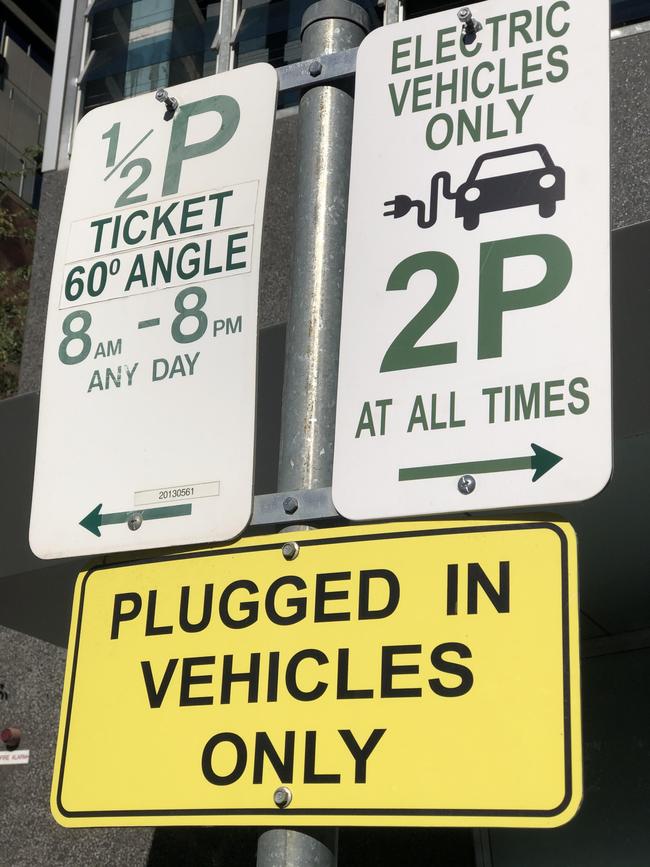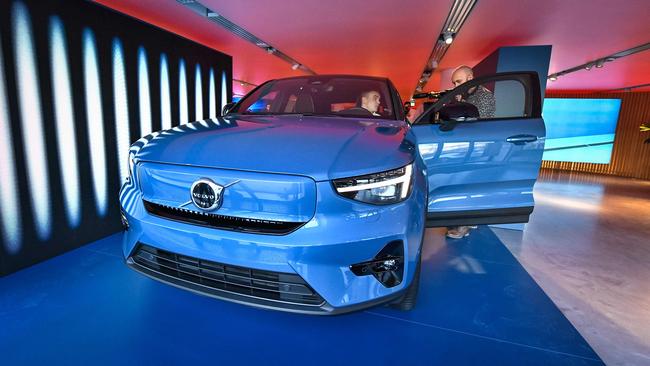How electric cars will run our toasters and washing machines
New technology will soon allow Aussies to use their electric car batteries to feed electricity into their homes, resulting in cheaper bills.
National
Don't miss out on the headlines from National. Followed categories will be added to My News.
Australians’ cars will be powering their televisions, toasters and airconditioners in the not-too-distant future as the drive towards more electric vehicles and renewable energy accelerates.
New technology will allow people to use their electric car batteries as power banks that feed electricity into their home to run their appliances, reducing the energy drain on the grid or their own home solar system.
It will result in cheaper electricity bills for motorists who use free or low-cost solar-powered charging stations at work and businesses then bring that energy home.

Trials of the technology, known as vehicle-to-grid or V2G, are under way in the ACT using 51 Nissan Leaf electric vehicles, and some energy experts say it could be available for households and fleets within two years.
DC Power Co head of products Johan Karlsson said electric vehicles were “essentially very big batteries on wheels” that could potentially share that energy storage with the home.
“It is possible that an electric car could store about four to six times as much electricity as a home battery,” he said.
Mr Karlsson said many retailers, service centres and shopping centres offered free electric vehicle (EV) chargers to attract customers, and EV chargers were becoming increasingly common in the workplace and were “a great way of ensuring cheaper daytime renewable energy gets into the tank”.

The ACT trial, which involves a consortium including the Australian National University (ANU), involves the ACT Government fleet and is expected to end early next year.
ANU research leader Bjorn Sturmberg said he expected “commercial partners will follow up with an offering for households and fleets in the following year”.
The costs of bi-directional chargers, needed to pump car battery power back into the home, currently start at $10,000 but are expected to drop as more car manufacturers enable V2G.
“V2G take-up is low but growing internationally, particularly in Japan and the UK,” Mr Sturmberg said.

Several countries and cities are banning new petrol and diesel-powered vehicles within the next two decades. Norway is leading the charge with a ban set to be in force from 2025.
Carmakers are racing to shut down production of internal combustion engine vehicles, with Volvo announcing this week it would sell only pure electric cars by 2030. Australia’s electric car sales have been slow, with a market share last year of just 0.7 per cent compared with 10.2 per cent for the EU, 10.7 per cent for Britain and 75 per cent for Norway.
Simply Energy CEO Shannon Hyde said consumers would be able to save money and generate income by supporting the power grid with electric vehicle batteries.


Mr Hyde said free or low-cost EV charging could become a common employee benefit at workplaces where there was access to rooftop solar systems generating abundant, and cheap energy during the day.
“So, if you fill up your EV battery on this low-cost energy and then drive it home, you can use it to power your house, provided you leave enough in the battery to get back to work the next day,” he said.
HOW IT WORKS
• Vehicle-to-grid, or V2G, technology transfers electricity stored in electric vehicle batteries into the home or the energy grid.
• It’s currently expensive – with purpose-built chargers costing more than $10,000 – but is expected to fall sharply, just as solar panels and home battery storage systems have in the past decade.
• More electric car manufacturers are planning to introduce V2G technology.
• An electric vehicle battery could potentially power a home for up to seven days, compared with just one day for a typical home solar battery.
• If people charge their car with free or subsidised electricity at work or a shopping centre they can then power their home at a lower cost than their normal electricity rates.
Originally published as How electric cars will run our toasters and washing machines




